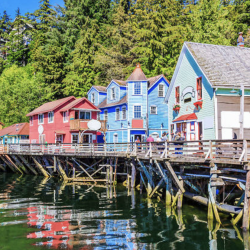Santa Monica, with its picturesque beaches, vibrant culture, and pleasant weather, is a prime destination for tourists and travelers from around the world. Santa Monica’s hotels play a crucial role in providing a comfortable and memorable stay for these visitors. However, as the city evolves and demands for high-quality accommodations increase, the role of architecture in shaping the hotel industry becomes ever more important. In this blog post, we will explore the reasons why Santa Monica hotels need the expertise of Santa Monica architecture firms to keep up with the evolving needs and expectations of their guests.
Reflecting Santa Monica’s Unique Vibe
Santa Monica is known for its unique and eclectic vibe. From the historic Santa Monica Pier to the trendy shops on Third Street Promenade, this city boasts a distinct personality that sets it apart from other beachside destinations. Santa Monica architecture firms understand the importance of reflecting this distinctive local culture in hotel design.
These firms can infuse elements of coastal living, art deco influences, and sustainable design practices to create hotels that not only meet the needs of modern travelers but also immerse them in the essence of Santa Monica. Whether it’s designing lobbies with ocean views or rooftop terraces with stunning sunset panoramas, local architects can harness the spirit of Santa Monica to craft unforgettable hotel experiences.
Meeting Environmental Standards
Sustainability and eco-friendliness have become key concerns in today’s world. Santa Monica architecture firms are well-versed in local regulations and global sustainability trends. They can design hotels that meet or exceed environmental standards, making them not only more attractive to eco-conscious travelers but also in compliance with the city’s green building requirements.
These firms can integrate energy-efficient systems, utilize recycled and locally-sourced materials, and incorporate eco-friendly technologies like solar panels and rainwater harvesting systems. By prioritizing sustainability, hotels can reduce their carbon footprint, lower operational costs, and appeal to an ever-growing segment of environmentally aware tourists.
Maximizing Space and Functionality
Space is a valuable commodity in Santa Monica, and it’s essential for hotels to make the most of their available area. Santa Monica architecture firms can optimize the use of space, ensuring that hotel rooms are comfortable and efficiently arranged. They can also create multi-functional spaces, such as communal areas that double as coworking spaces, to cater to the needs of modern travelers who seek both leisure and productivity during their stay.
Additionally, local architects can work within the constraints of Santa Monica’s zoning laws and other regulations to maximize the hotel’s floor area, potentially adding more rooms or amenities that contribute to the overall profitability of the establishment.
Enhancing Guest Experience
Santa Monica’s hotels need to go beyond providing basic amenities to offer exceptional experiences that keep guests coming back. This is where Santa Monica architecture firms truly shine. They can craft hotel designs that prioritize the guest experience, creating inviting spaces that captivate and cater to visitors’ desires.
Architects can design hotel rooms with a focus on natural lighting, captivating views, and innovative layouts that optimize comfort and relaxation. They can create inviting communal areas, such as lobby lounges and outdoor spaces, that encourage social interaction and relaxation. By understanding the psychology of design, these firms can help hotels offer an experience that’s unforgettable and leaves guests with lasting memories.
Maintaining Historic and Cultural Significance
Santa Monica has a rich history, and many of its hotels are housed in historic buildings with unique architectural charm. Santa Monica architecture firms are well-equipped to preserve the cultural and historical significance of these structures while modernizing them to meet the demands of today’s travelers.
Architects can skillfully blend historical and contemporary elements, ensuring that the hotel’s design pays homage to the past while embracing the future. This approach can attract travelers seeking a sense of nostalgia and a connection to Santa Monica’s heritage.
Staying Competitive
The hotel industry in Santa Monica is highly competitive. To remain relevant and competitive in the market, hotels need to constantly upgrade and innovate. Santa Monica architecture firms can help hotels stay ahead of the curve by incorporating the latest trends and technologies in their designs.
Whether it’s the integration of smart room controls, contactless check-in/out procedures, or cutting-edge amenities, local architects can ensure that Santa Monica hotels remain attractive and competitive in a rapidly evolving hospitality landscape.
Conclusion
In Santa Monica, where tourism is a thriving industry, the role of Santa Monica architecture firms in the hotel sector cannot be overstated. They play a pivotal role in crafting hotels that not only meet the needs and expectations of modern travelers but also reflect the city’s unique culture, preserve its history, and contribute to its sustainability goals. By harnessing the expertise of local architects, Santa Monica’s hotels can ensure that they remain vibrant and appealing, offering guests memorable experiences that keep them coming back to the beautiful shores of this coastal paradise. The collaboration between Santa Monica hotels and Santa Monica architecture firms is a win-win partnership that benefits both the city and its visitors, ensuring that the magic of Santa Monica endures for generations to come.




